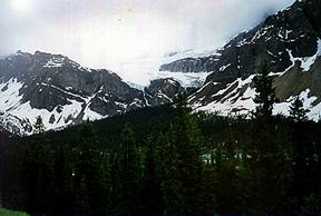
|
|
|
Siberian
Taiga A biome is the type
of habitat in certain places, like mountain tops, deserts,
and tropical forests, and is determined by the climate of
the place. The taiga is the biome of the needleleaf forest.
Living in the taiga is cold and lonely. Coldness and food
shortages make things very difficult, mostly in the winter.
Some of the animals in the taiga hibernate in the winter,
some fly south if they can, while some just cooperate with
the environment, which is very difficult. (Dillon
Bartkus) Taiga is the Russian
word for forest and is the largest biome in the world. It
stretches over Eurasia and North America. The taiga is
located near the top of the world, just below the tundra
biome. The winters in the taiga are very cold with only
snowfall. The summers are warm, rainy, and humid. A lot of
coniferous trees grow in the taiga. The taiga is also known
as the boreal forest. Did you know that Boreal was the Greek
goddess of the North Wind? The taiga doesn't
have as many plant and animal species as the tropical or the
deciduous forest biomes. It does have millions of insects in
the summertime. Birds migrate there every year to nest and
feed. Here is some
information about the temperatures and weather in the taiga.
The average temperature is below freezing for six months out
of the year. The winter temperature range is -54 to -1°
C (-65 to 30° F). The winters, as you can see, are
really cold, with lots of snow. Temperature range in
the summer gets as low as -7° C (20° F). The high
in summer can be 21° C (70° F). The summers are
mostly warm, rainy and humid. They are also very short with
about 50 to 100 frost free days. The total precipitation in
a year is 30 - 85 cm (12 - 33 in) . The forms the
precipitation comes in are rain, snow and dew. Most of the
precipitation in the taiga falls as rain in the summer.
The main seasons in
the taiga are winter and summer. The spring and autumn are
so short, you hardly know they exist. It is either hot and
humid or very cold in the taiga. There are not a lot
of species of plants in the taiga because of the harsh
conditions. Not many plants can survive the extreme cold of
the taiga winter. There are some lichens
and mosses, but most plants are coniferous trees like pine,
white
spruce,
hemlock and douglas
fir.
Coniferous trees are
also known as evergreens. They have long, thin waxy needles.
The wax gives them some protection from freezing
temperatures and from drying out. Evergreens don't loose
their leaves in the winter like deciduous trees. They keep
their needles all year long. This is so they can start
photosynthesis as soon as the weather gets warm. The dark
color of evergreen needles allows them to absorb heat from
the sun and also helps them start photosynthesis
early. Evergreens in the
taiga tend to be thin and grow close together. This gives
them protection from the cold and wind. Evergreens also are
usually shaped like an upside down cone to protects the
branches from breaking under the weight of all that snow.
The snow slides right off the slanted branches. The taiga is
susceptible to many wildfires. Trees have adapted by growing
thick bark. The fires will burn away the upper canopy of the
trees and let sunlight reach the ground. New plants will
grow and provide food for animals that once could not live
there because there were only evergreen trees. Animals of the taiga
tend to be predators like the lynx
and members of the weasel family like wolverines,
bobcat,
minks and ermine. They hunt herbivores like snowshoe
rabbits, red
squirrels and voles. Red deer, elk, and moose can be found
in regions of the taiga where more deciduous trees
grow. Many insect eating
birds come to the taiga to breed. They leave when the
breeding season is over. Seed eaters like finches and
sparrows, and omnivorous birds like crows stay all year
long. 2000
bibliography: "Taiga Facts",
http://www.hewett.norfolk.sch.uk/curric/NewGeog/Habitats/facts.htm,
(June 2000). "Taiga Plants",
http://www.richmond.edu/~ed344/webunits/biomes/tplants.html,
(June 2000). "Taiga",
http://www.runet.edu/~swoodwar/CLASSES/GEOG235/biomes/taiga/taiga.html,
(June 2000).
|
|
|
|
|

